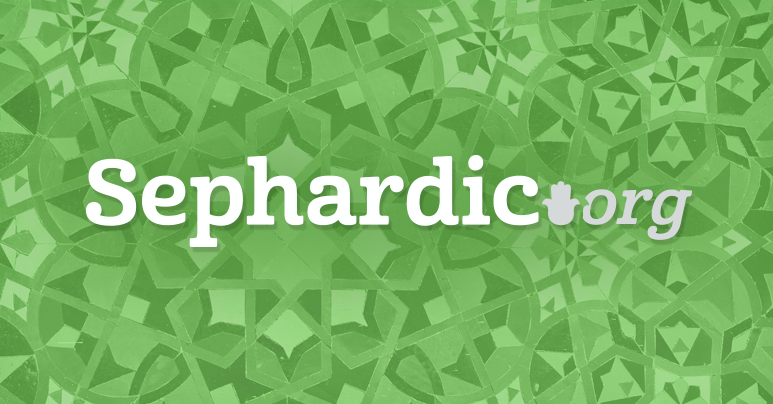
VAYELEKH 5778 ‐ SENDING FORTH THE LIGHTS VIA THE PUBLIC TORAH READING
The final law recorded in the Torah makes it incumbent upon all men of Israel to write a Torah scroll. The
verse 31:19 reads “Write for yourselves a Torah which contains this song (Ha’azinu)...” The physical scroll is
expressed by its letters אותיות and crowns תגין ‐ with an additional two aspects נקודות ‐ vowels ‐טעמים
cantillation notes ‐ only being revealed during the readings of the same. R. HaAri teaches (EH 8 and PEH ‐
SKST 1) how these four aspects known by the acrostic טנת״א reflect certain lights that are sent forth during
the ordained public readings. The Talmud (BK 82 ‐ TJ Meg 4:1) teaches that עזרא הסופר decreed that a ציבור
has an obligation to publicly call upon three people to read in total ‐ a minimum of 10 verses from a Sefer
Torah on each Monday and Thursday. R. HaAri explains (SK ‐ KS) that on Shabbat all of the lower spiritual
worlds known thru their acrostic בי״ע ascend to an elevated station in אצילות ‐ On the Monday following ‐ the
world of יצירה associated with the spiritual soul called רוח descends to its place. On the Thursday preceding
the Shabbat the world of יצירה makes its preparation to once again ascend. These two days are associated
spiritually with the written law ‐ it was therefore rabbinically mandated upon the ציבור to publicly read from
the תורה to reveal certain spiritual lights associated with this movement of יצירה ‐ (See SK ‐ KST 1) This might
be the intent of a Midrash Tanhuma sited by Tosafot (BK 82) that it was on Thursday that Moshe ascended to
receive the second set of luhot and it was on a Monday that he returned with them to מחנה ישראל ‐ These
lights which will ultimately be sent forth via the public reading are said to be concealed within a spiritual level
called יסוד דאבא ‐ This level in turn has two spiritual coverings ‐ We will attempt to explain how they are
disrobed and בוקע ‐ break forth ‐ via the processes of פתיחת ההיכל ‐ opening of the chamber and ‐הגבהה
opening of the casing of the ספר תורה after being brought out towards the תיבה ‐ The lights will ultimately be
sent forth towards the שכינה or the Divine Reservoir via the actual reading from the Torah scroll. It is known
that it is from this reservoir that Israel spiritually drinks. It behooves us to review the writings of R. HaAri and
the Rashash in order to specifically learn how to properly accomplish this task. We know that every act and
word that R. HaAri was accustomed to perform ‐ was motivated solely for its spiritual (halakhic) intent. Hence
‐ we are to learn from his particular nuances associated with these public readings in order to properly bring
forth these Divine Lights.
THE FIRST STAGE OF DISROBING AND BREAKING FORTH
After the וידוי ויעבור י״ג מדות נפילת אפים ותחנונים ‐ the ציבור is now to reveal the lights ready to come forth from
the יסוד דאבא ‐ The initial stage of disrobing and breaking forth is called פתיחת ההיכל or the opening of the
chamber from where the Torah is stored. The opening parallels the removal of the first concealment called
the יסוד דאמא ‐ The ספר תורה is then taken out ‐ signifying an exit from that spiritual place ‐ and is then to be
crowned by two עטרות ‐ which is physically expressed via two רימונים ‐ These are placed respectively on the
upper right and left shoulders of the Torah as they represent the spiritual עטרות ‐ that the Torah is endowed
with at that time. For those advanced students these are the חו״ג דדעת דאו״א ‐ According to the school of the
רש״ש as recorded in the סידור היר״א ‐ it is proper at that time to recite the verse 3:11 from Shir HaShirim ‐
צאינה וראינה בנות ציון במלך שלמה בעטרה שעטרה לו אמו ביום חתונתו וביום שמחת לבו ‐ Apparently the King ‐ שלמה
here is synonymous with the spiritual ספר תורה who at this time receives the עטרות from his spiritual mother
‐בת שבע
THE SECOND STAGE OF DISROBING AND BREAKING FORTH
The next stage in revealing these lights occurs after the Torah is brought out towards the תיבה where it is to
be read. First ‐ as it exits the היכל it is placed between the arms of the bearer to reflect its spiritual place. R.
Hayyim Vital records that his teacher would kiss it ‐ then accompany and escort it while it was being
transported towards the תיבה ‐ It apparently should remain closed at that time ‐ as R. Hayyim notes (SK
SST:1) ואח״כ היה נשאר שם סמוך אל התיבה עד שהיו פותחין הס״ת ומראין אותו לקהל כנודע ‐ When at the תיבה it (the
Torah case) is then opened to the ציבור sending forth lights via the removal of its next covering יסוד דז״א ‐ with
the ציבור declaring (PEH ibid 2 in name of EH) that this spiritual level is synonymous with that which our
teacher revealed to Israel ‐ וזאת התורה אשר שם משה לפני בני ישראל ‐ Those in attendance are then to look well
enough at the letters appearing in the scroll ‐ preferably at those which spell his name ( Hemdat Yisrael ‐ of R.
Shemuel Vital ) to become personally endowed with this great light. The same source apparently advocates
declaring (Dev 33:4) ‐ תורה צוה לנו משה These lights synonymous with the spiritual roots of Moshe from whom
Hashem selected to be its giver are to be gathered as a מורשה at the Divine reservoir or קהלת יעקב ‐ At that
point the Sefer is placed on the תיבה ‐ and the ציבור are to return to their seats for the duration of the
reading. According to R. HaAri it is proper to be in a sitting position during the public Torah reading.
SENDING FORTH THE LIGHTS TOWARDS THE SHEHINA
At this point all of the coverings of the lights emanating from the יסוד דאבא have been revealed. Now via the
readings of the three עולים these lights are to be sent to the Divine Reservoir or the שכינה ‐ R.HaAri continues
and details how the עולים are to accomplish their respective tasks properly ‐ The lights that are revealed are
to be split into a triad ‐ (Gittin 5:8) ‐ The כהן will send forth the right column lights associated with the side of
Hesed. The לוי ‐ the left column lights associated with Gevurah. Finally, the ישראל is to send forth the central
column lights to the שכינה ‐ All should be careful to look at the place the reader is to begin ‐ then covering it
with the cloth attached to the תיק and only then reciting the ברכו and the before and after blessings. All the
time the עולה should hold onto the actual scroll using the מפה interface being careful (during the reading) not
to touch the scroll with his bare hands. As the Sages (Shabbat 14) teach ‐כל האוחז ס״ת ערום נקבר ערום
whoever holds a Torah scroll without a covering will be buried bare ‐ Initially both hands are to be used in
holding the scroll ‐ but soon after ‐ the left hand is to be dropped from its hold on the scroll ‐ leaving the right
hand alone holding its place. According to R. Shemuel Vital the main concern to refrain from touching the
scroll with exposed hands is during the actual reading ‐ as the lights emanate outwards.
THIS LAW IS ONLY APPLICABLE FOR A SIBOUR
R. Hayyim testified that R. HaAri often prayed with a minyan in his home both on Shabbat and weekdays ‐ but
was not concerned with the fact ‐ that they did not take out a Sefer Torah to read from. Apparently, R. HaAri
held that these lights are only revealed via a fixed ציבור ‐ Or he was concerned and followed the strict ruling
(SA ‐ OH 135‐14) that it is forbidden to move a Sefer Torah from its place. This teaching strengthens the
rulings accepted by the Sepharadim that a Sefer Torah should not be moved for the benefit of a temporary
minyan under any circumstances. This includes bringing a ספר תורה ‐ to be used for the benefit of those who
are praying at the house of mourning. Furthermore ‐ I would imagine we should consider being strict and not
move a ספר תורה for the benefit of temporary minyanim established in cities or hotel rooms for traveling
community business men. A clear leniency in the matter ‐ would be if they would use a Sefer Torah written
with the specific intent that it be used as a traveling version. In this situation even the Sephardic authorities
have been found to be lenient in the matter. The Ashkenazic authorities on the other hand ‐ encourage the
movement of the Sefer Torah even for the benefit of temporary minyanim if certain minimal conditions are
met. (See Rama and commentators to 135:14).
RETURNING THE SCROLL TO ITS PLACE
It is important to note that Torah case remain closed after the reading and transported that way back to its
place in the היכל ‐ This is to reflect the spiritual reality that the breaking forth of these lights from the יסוד
דאבא ‐ is only to last during the short time until the completion of the reading. This idea is fortified in the
custom of the Rabbis of Yeshivat Bet El that the Sefer Torah should be returned immediately at the
conclusion of the weekday reading after the recital of חצי קדיש ‐ and not delay it’s return until after ובא לציון
and קדיש תתקבל ‐ For there is apparently no spiritual benefit in leaving the Sefer Torah on the תיבה after its
reading. (See ‐Kaf HaHayyim Sofer 135:2)
Shabbat Shalom ‐ Victor Bibi








